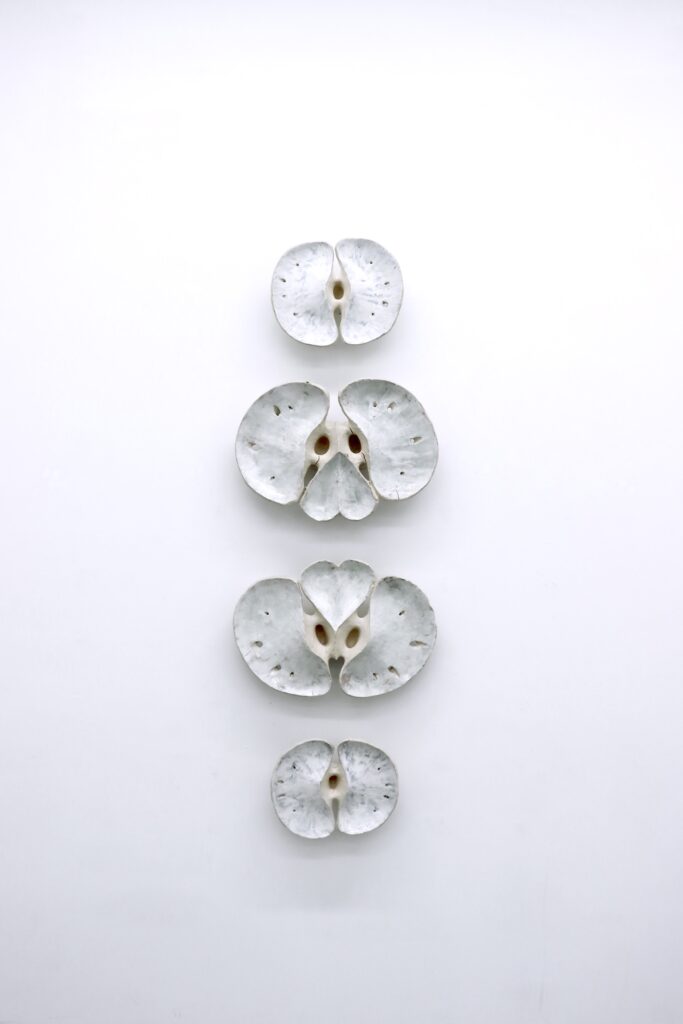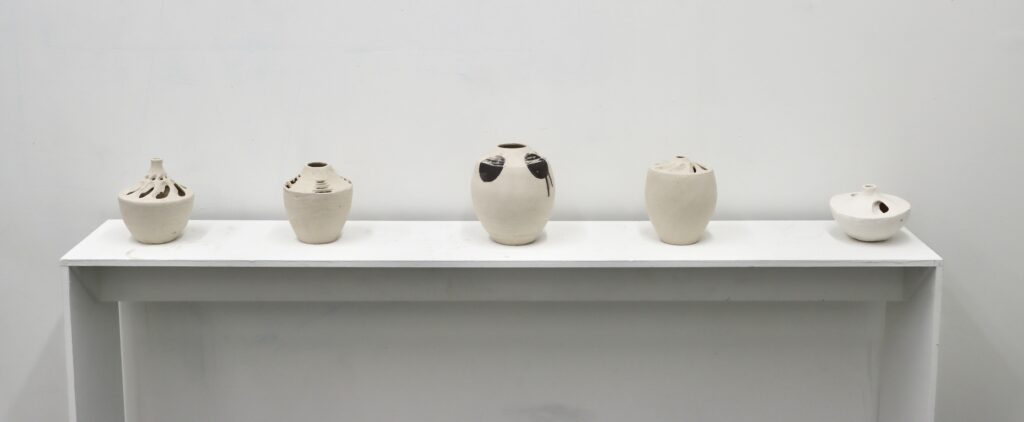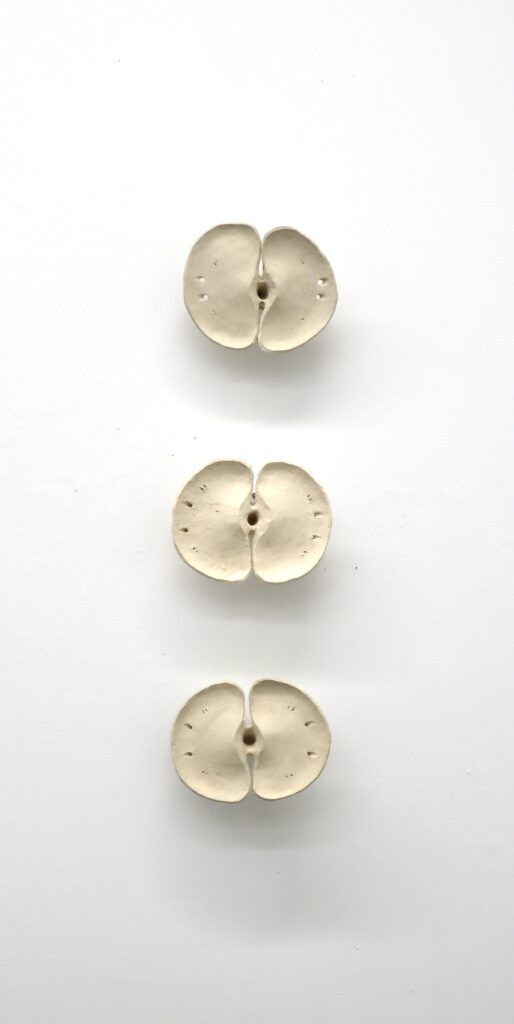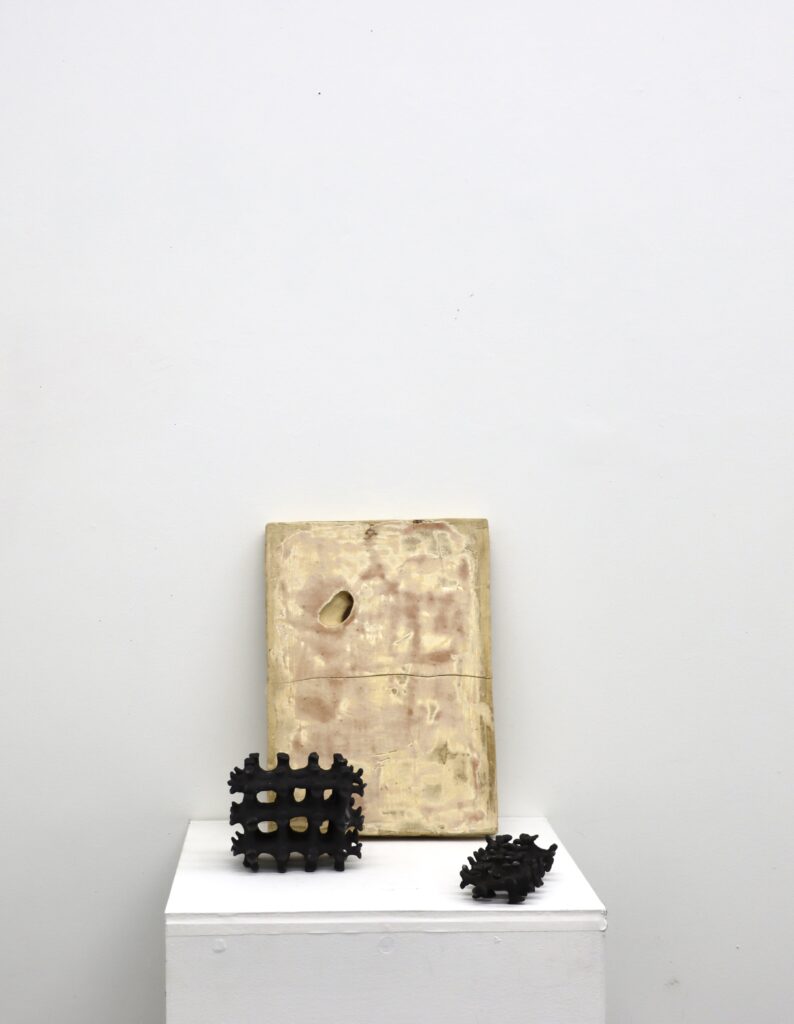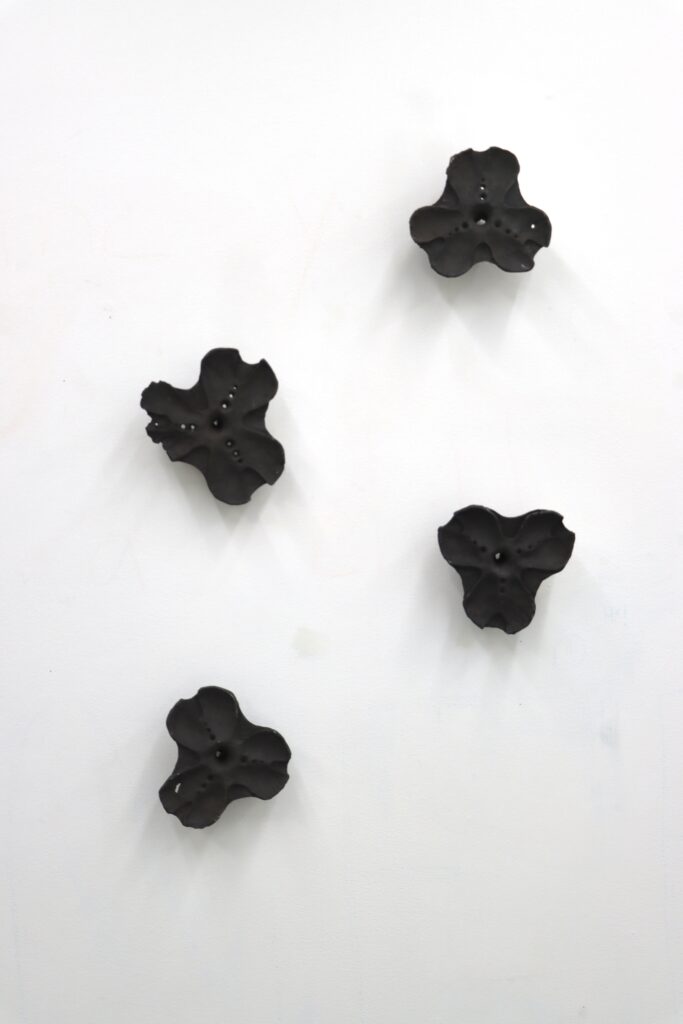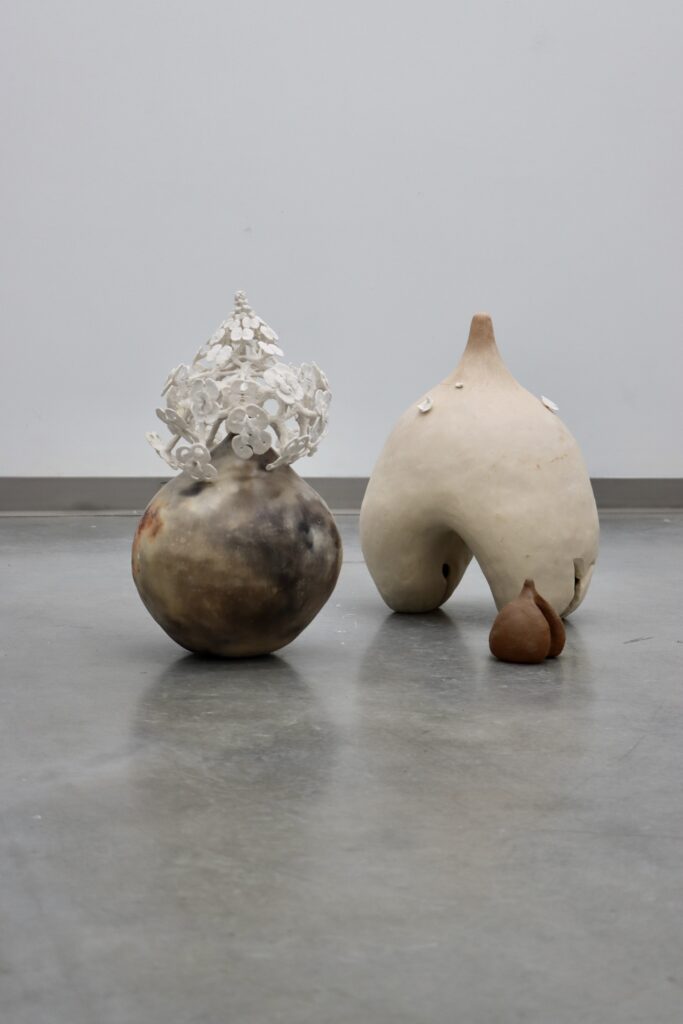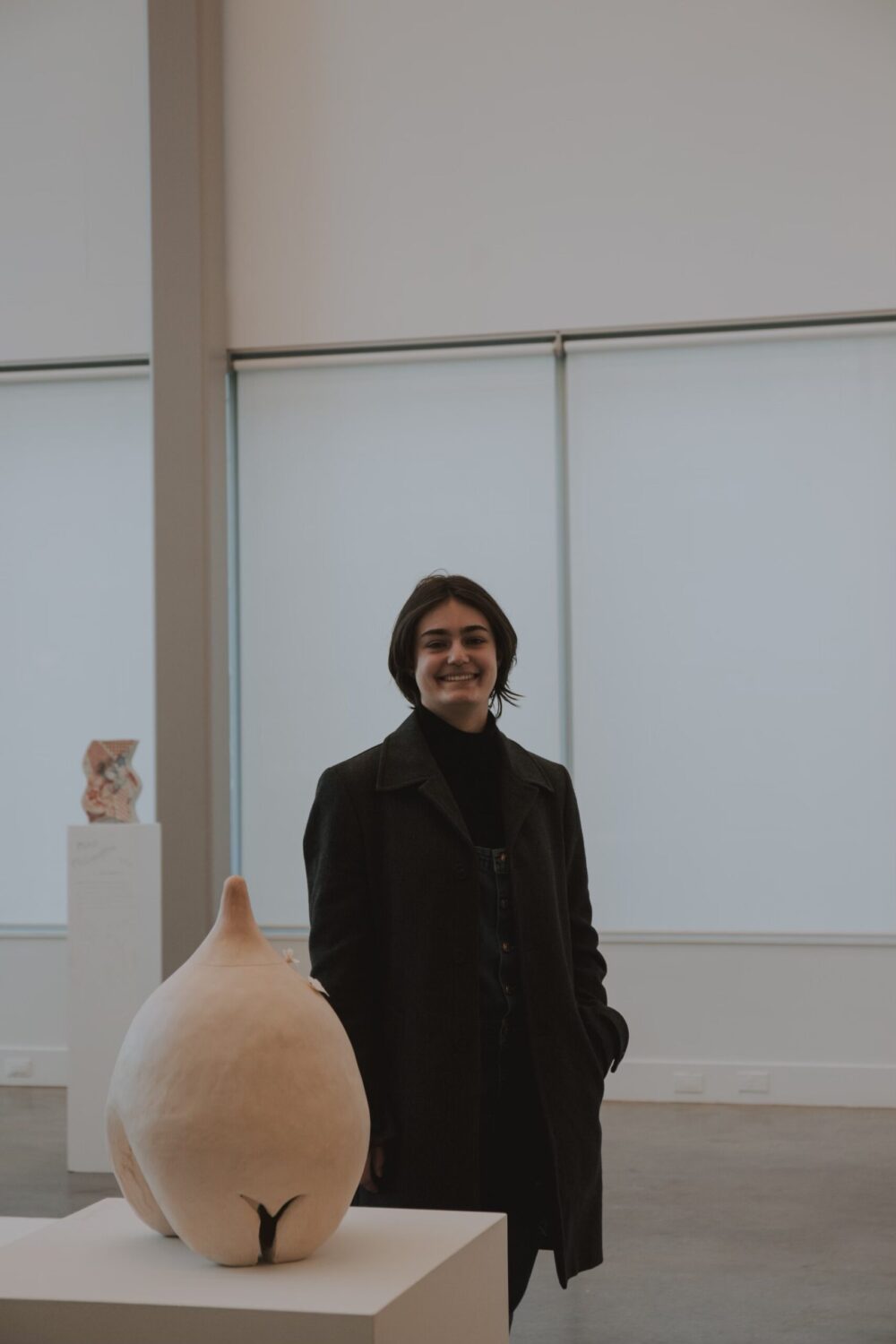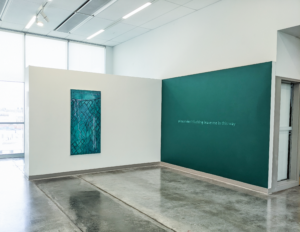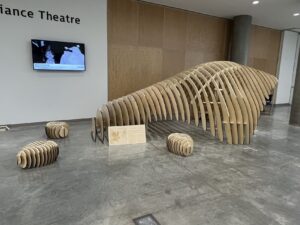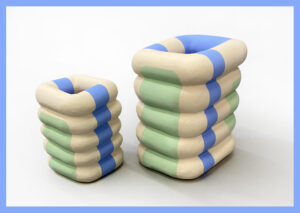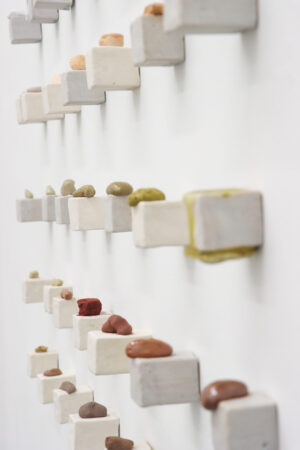playing god to the lawn
Maya Florey
See it On Campus: Level 2
Visitor InfoAward Recipient
John C. Kerr Chancellor Emeritus Awards for Excellence in Visual Arts

————————————————————————————————————————————————————————-
playing god to the lawn is a body of work made between 2022 and 2023 inspired by the conversation between the inside and outside of the ceramic vessel form. Working in a non-linear way that mimics the shape of mycelium, playing god to the lawn embodies an interconnectedness that slips through the calcified binaries that are pervasive within society, appearing in ways that are almost, but not quite familiar.
Objects are manufactured to look like they have an unknown biological purpose, made from instantly recognizable visual moments such as the turn of the corner of a cat’s mouth, the mournful pareidolia of a sliced mushroom, the point at which a nerve passes through a bone. This implies a god-like figure that is the architect of the spontaneous growth of the world, and the way that living material is twisted, constricted and distended by time and entropy, repeating and mirroring to form uncanny matrices. The seen and unseen are in conversation, with emotion and being impressed upon the physicality of the world. Throughout this exhibition, the tactile proximity of clay to living substances is manipulated to generate new forms.
As a queer person who exists slightly outside the gender binary, Playing god to the lawn questions the need to assign binary gender to abstract form, contemplating a continuity between the the internal and the external. This is not a stark binary, but a smooth undulation that can cradle the world. A co-mingling that reflects the experience of becoming embodied in a world distorted by time. This blurring of boundaries extends to the dialogue between the body and the environment, in which the human is separated from the environment by the hegemony of colonial power structures and the body becomes the liminal space between the mind and the world.
Within this body of work, abstract sculptures engage qin conversation with objects such as teapots, cups and vases that are a familiar part of the domestic environment, calling into question the meaning of material objects in a gallery space and the institutional emphasis on the purposeless object. In an art world that increasingly places value on objects that are tokens of wealth and devalues objects that are useful and used, this is a radical act. Post-Dioecious Vessel and socket/orifice affirm the idea that there is no beginning or end to the work, as it is not confined to the physical space that is taken up by the sculpture and instead expands into the surrounding area, transforming it.
This somatic memory of clay provides a visualization of the way that the body remembers, touch made permanent during the firing process. Osteogenesis, in and out of phase and Labiar I and II are riddled with creases, orifices and extrusions that describe the flawed humanness of the body in abstracted, fantasized and sexualized forms that are at once familiar to lived experience and unplaceable as if they materialized in a dream.
